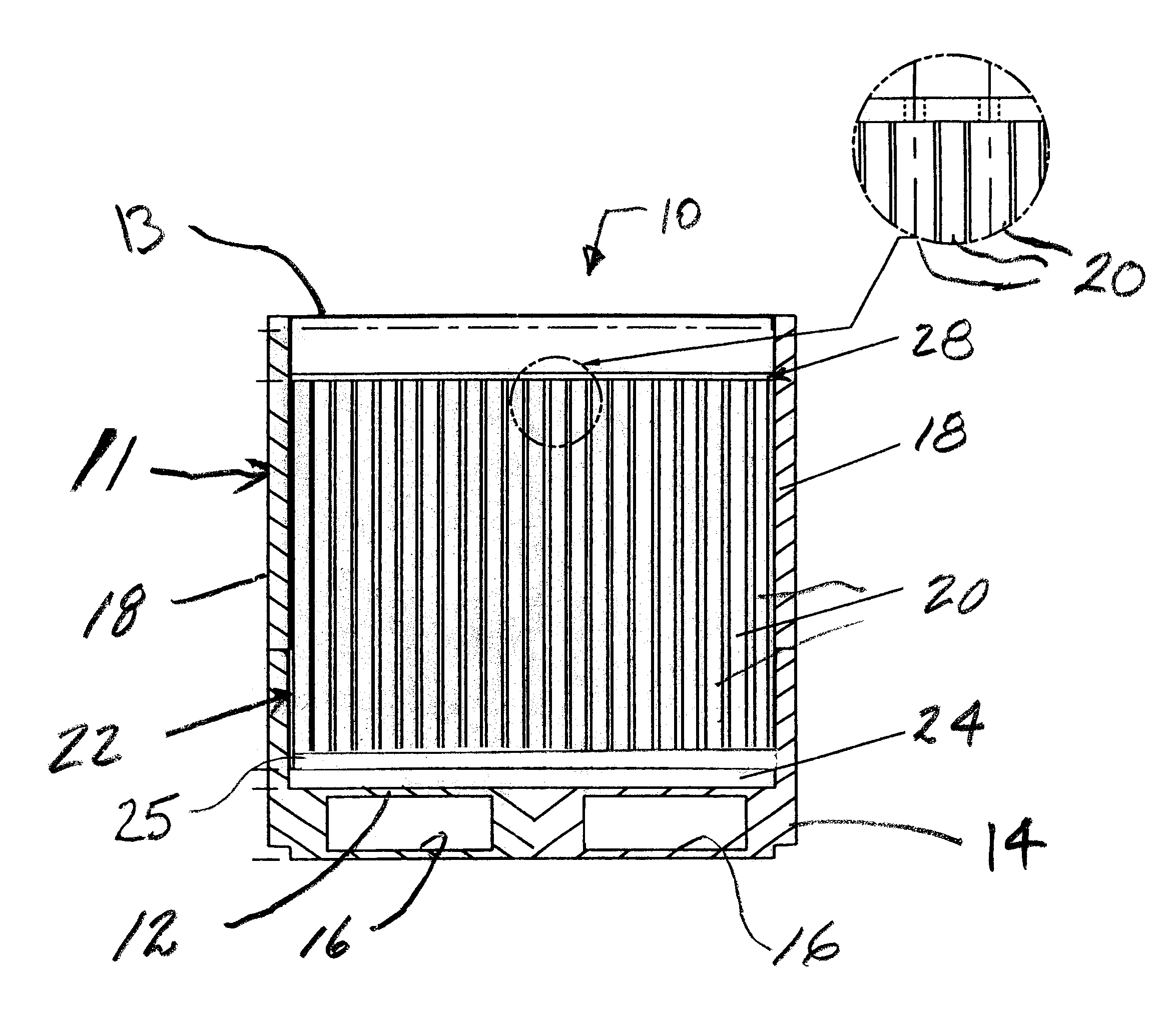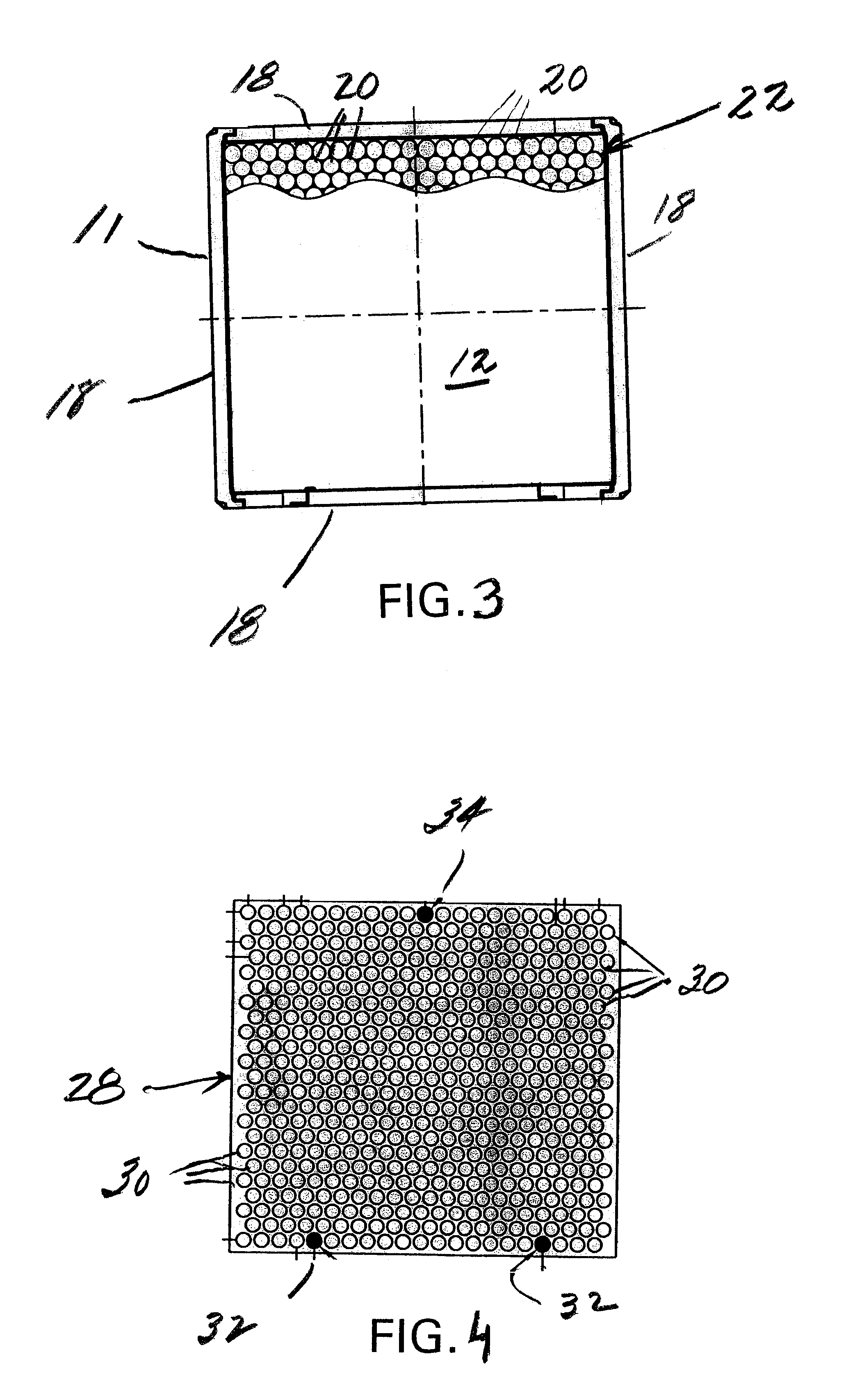Shipping container for elongated articles
a technology for shipping containers and elongated objects, applied in the field of shipping containers, can solve the problems of increasing the material and labor costs of packing and shipping, the weight limit, and the use of relatively small containers
- Summary
- Abstract
- Description
- Claims
- Application Information
AI Technical Summary
Benefits of technology
Problems solved by technology
Method used
Image
Examples
Embodiment Construction
FIG. 1 is a side cross-sectional view of one embodiment of a shipping container 10 according to the present invention. The shipping container 10 includes a reusable rigid container housing 11 that is commercially available under the trademark "ROPAK" from Linpak Materials Handling of Georgetown, Ky. The rigid container housing 11 has a bottom wall 12 formed by the upper part of a pallet base 14, which includes two-way or four-way forklift guideways 16. As supplied, the ROPAK container housing 11 has collapsible side walls 18 forming an open upper end 13, preferably of rectangular shape in plan and all four side elevations--the collapsible feature is not used. The present invention may use any durable, reusable rigid container housing. Rectangular containers are, of course, preferred for maximum density when loaded in groups into a transport vehicle. The containers are stackable, and top covers (not shown) are available to close the topmost container of a stack.
A cushioning member 24...
PUM
 Login to View More
Login to View More Abstract
Description
Claims
Application Information
 Login to View More
Login to View More - R&D
- Intellectual Property
- Life Sciences
- Materials
- Tech Scout
- Unparalleled Data Quality
- Higher Quality Content
- 60% Fewer Hallucinations
Browse by: Latest US Patents, China's latest patents, Technical Efficacy Thesaurus, Application Domain, Technology Topic, Popular Technical Reports.
© 2025 PatSnap. All rights reserved.Legal|Privacy policy|Modern Slavery Act Transparency Statement|Sitemap|About US| Contact US: help@patsnap.com



